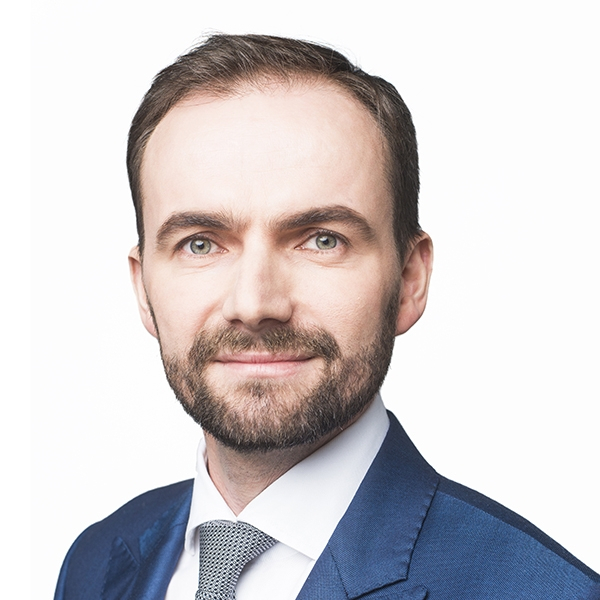Healthcare and pharmaceuticals: a hotbed for investment

Healthcare and pharmaceuticals in CEE have emerged as key sectors of M&A activity. The needs of an aging population, together with demand for modernised healthcare systems and infrastructure, are being matched by increased government spending on healthcare alongside regulatory reform across the region. These are further underpinned by rapid pharmacological and technological advancements.
“This combination has made these sectors a prime target for investment, accelerated by the COVID-19 pandemic which heightened awareness of their importance,” says Anikó Kircsi, Partner at CMS in Hungary. “Simultaneously, healthcare and pharmaceuticals companies are being fundamentally transformed by technologies such as generative artificial intelligence.”
As populations age across Europe, including CEE, demand is increasing for healthcare services, chronic and rare disease management, and pharmaceutical solutions for age-related conditions. This demographic shift has intensified M&A activity as companies seek to seize market share in the elderly and long-term care sectors.
According to Döne Yalçın, Partner at CMS in Türkiye and Austria, “There is a willingness to spend more on healthcare: technology and PE are boosting activity in the sector because CEE has room for development.” She points to “the average age of the CEE population increasing; we also see that in Türkiye, together with huge healthcare tourism, which is driving investment. Healthcare stands out as a growth sector, including Türkiye - it’s been very active in the past year.”
There is a willingness to spend more on healthcare: technology and PE are boosting activity in the sector because CEE has room for development.
Contrary to the general trend elsewhere, [the volume of healthcare and pharmaceutical deals in CEE grew by 66% in 2024, highlighting the sector’s resilience and sustained appeal to investors. Globally, healthcare companies pursue M&A deals to achieve economies of scale, diversify product offerings, and streamline operations. In the pharmaceutical sector, there is also a drive to expand R&D capabilities and enhance pipelines, particularly in biotechnology and personalised medicine.
Last year, healthcare deals related to the sale of service providers (dental services, hospitals, family planning centres, and veterinary services) and equipment suppliers (e.g. laboratory equipment, surgical/medical instrument manufacturers), while pharmaceutical and biotechnology targets also featured in high value transactions, such as the sale of Hungary-based Omixon Biocomputing to Spanish buyer, Werfen.
Other headline healthcare deals in 2024 include: the acquisition of Polish private healthcare provider Scanmed by the American Heart of Poland Group, backed by Italy’s Gruppo San Donato from Abris; the acquisition of Nu-Med Group, a cancer care provider in Poland, from Enterprise Investors by Affidea; and Hungarian Chemaxon, a scientific informatics software provider, by US-based Certara, a model-informed drug development company.
Overall, Poland features in roughly a third of life sciences transactions in CEE, followed by Romania, Hungary, and the Czech Republic. Although local buyers play a significant role, international investors from Western Europe and the US remain at the forefront of investment, seeking strategic acquisitions that offer access to new markets in the region, cost efficiencies, and innovation hubs in medical technology. Last year, investors in the sector included diverse buyers from across Europe.
PE groups are especially drawn to stable, cash-generating healthcare assets, including hospitals, medical device manufacturers, and digital health startups. The predictable nature of revenue from these sectors, combined with their resilience during economic downturns, makes them attractive for long-term investment strategies.
Private equity interest has also been forthcoming, balanced by some exits. “PE groups are especially drawn to stable, cash-generating healthcare assets, including hospitals, medical device manufacturers, and digital health startups,” says Borys Danevych, Life Sciences and Healthcare Partner at CMS in CEE & Ukraine “The predictable nature of revenue from these sectors, combined with their resilience during economic downturns, makes them attractive for long-term investment strategies.”
Velizar Velikov, Head of M&A Database at EMIS, notes: “We had a spike in healthcare and pharma deals during and after the COVID pandemic - over time, this subsided. However, interest remains strong. In terms of PE, we have both domestic and international investors - companies focused on their own countries, and in the health sector, investing cross-border, using platforms to consolidate investments in hospitals and pharmacies, for example.”
Prominent examples of PE transactions in CEE last year include:
- Penta Holding Ltd, a PE and asset management company, acquired Klinika Dr. Pirka, the Czech-based medical centre, from private owners.
- Affidea BV, a Netherlands-based provider of diagnostic imaging, outpatient and cancer care services, acquired MedEuropa Bucuresti, the Romanian cancer care provider, from Telemos Capital Ltd, a PE firm.
- Hungary-based Voyager Private Equity acquired a majority stake in WhiteLab Health Stations Kft., a local provider of hospitals and health care services.
We had a spike in healthcare and pharma deals during and after the COVID pandemic - over time, this subsided. However, interest remains strong.
Despite fundraising challenges, we expect that PE firms will continue to show interest in consolidation of certain areas of healthcare, as well as in biotech and medical device companies. Anikó Kircsi notes: “When structuring acquisitions in the healthcare and pharmaceutical sector in the CEE, foreign investors need to assess whether the transaction is notifiable under FDI restriction rules because, under certain circumstances, most CEE countries have FDI restriction regimes which may apply to both EU and non-EU investors.”
Industry experts suggest that M&A activity in CEE’s healthcare and pharmaceutical sectors will remain dynamic. Life sciences companies are looking to deliver better outcomes for patients, with more personalized patient experiences. Biotechnology companies, in particular, remain key targets in M&A due to their potential for innovation in drug discovery and treatments. Digital health, including telemedicine, healthcare data analytics, and AI solutions, is also expected to be attractive for acquisitions in the region.
Investment in healthcare and pharmaceuticals in CEE is likely to continue to accelerate, making it a hotbed for future growth, particularly for innovative companies with strong financials.
When structuring acquisitions in the healthcare and pharmaceutical sector in the CEE, foreign investors need to assess whether the transaction is notifiable under FDI restriction rules because, under certain circumstances, most CEE countries have FDI restriction regimes which may apply to both EU and non-EU investors.








